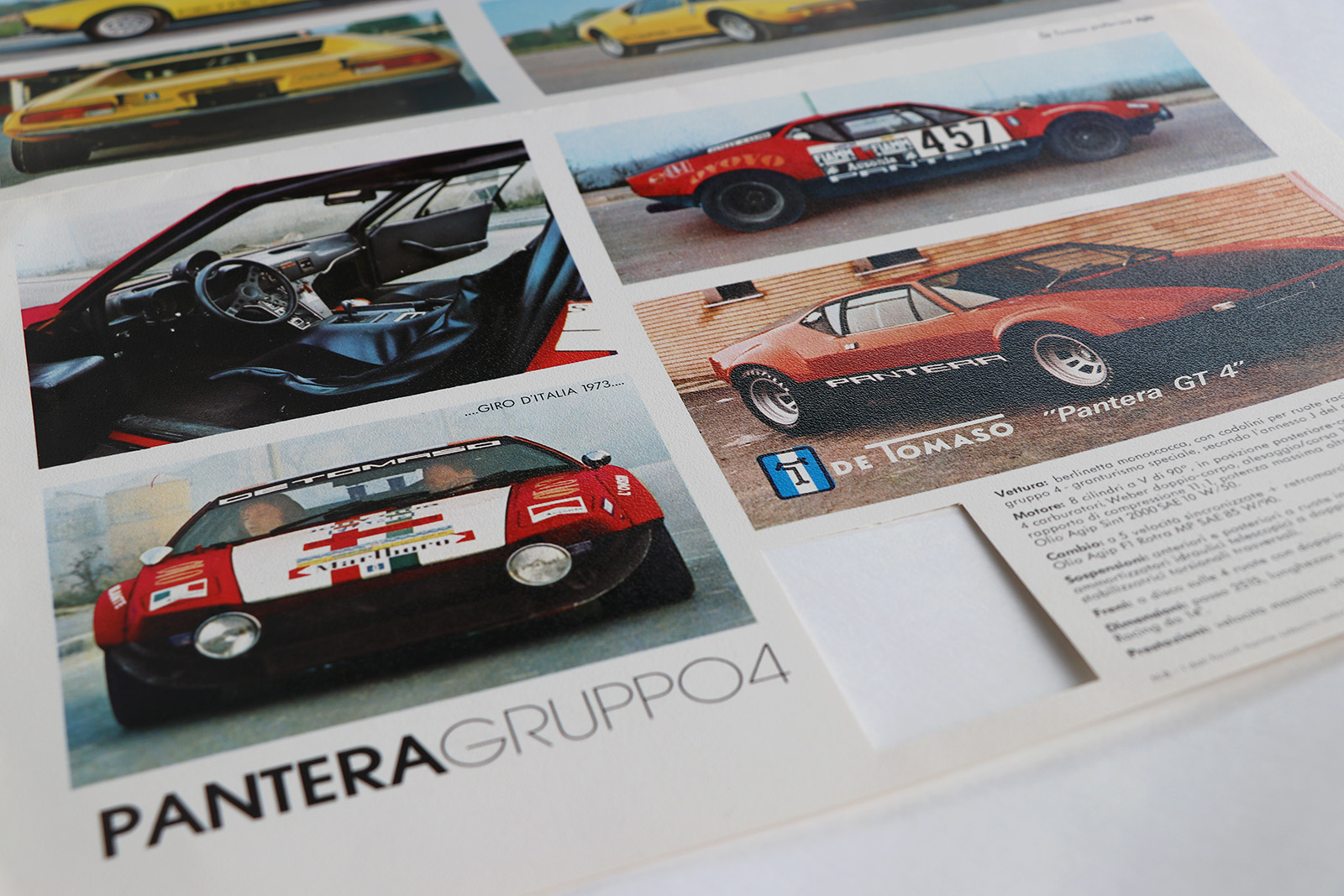Pantera GTS
In late 1971, De Tomaso had began building the Pantera GTS. This new model featured various cosmetic and performance enhancements over the standard model, including: a high-compression engine, a forged aluminium inlet manifold and special low restriction exhaust manifolds and silencers, ventilated disc brakes and a different steering rack. Cosmetically, the model was fitted with larger wheels, flared arches and black trim with GTS badging.
However, by the end of the 1974 model year, Ford and De Tomaso had dissolved their business arrangement and consequently, whilst the European market enjoyed the full GTS specification, only 150 GTS models were exported to the US; manufactured with the 'cosmetic' package only and none of the performance enhancing modifications.
'Group' race cars
The Group 3 and Group 4 race cars were developed and assembled in this same time period, December 1971 to March 1972. A fixed number of Group 4 race cars were built to compete in the 1972 season of the World Endurance Racing Series. The first wide body Pantera road car, the GT4, was an off-shoot of the Group 4 race car program, with only a handful ever built.
While the Group 4 Pantera was a dedicated, purpose-built race car that used Pantera architecture but a unique chassis and suspension; the FIA Group 3 rules were far more restrictive, as the FIA intended for this class to consist solely of essentially stock, unmodified production sports cars. The Group 3 race car was made available from the factory on special order from 1972 through 1984.
Competition Panteras were built for 'Group 5' or IMSA GTX racing, but only a few were ever campaigned.
270 and 290 prototypes
Built in 1973 as a result of a knee-jerk reaction to the oil crisis, two 'budget' Pantera prototypes were produced. The '270' and '290' housed Ford 2.7 and 2.9 litre engines, (respectively,) with ZF 5-speed gearboxes. The 290 made show appearances, however, De Tomaso soon realised that the V6-engined Pantera lacked the 'aggressive appeal' of the V8-engined counterpart. They remained one-offs.





















